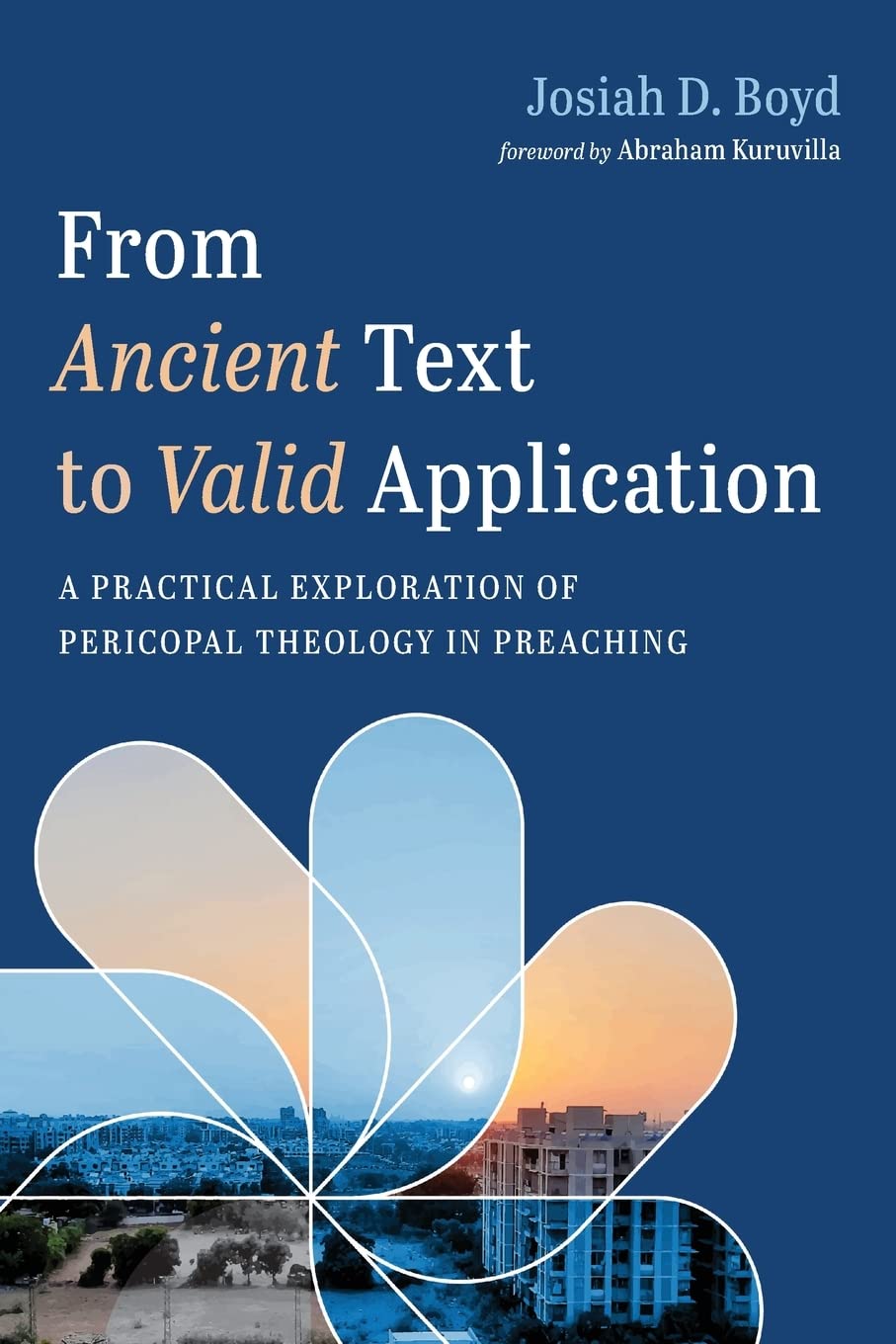A Book Review from Books At a Glance
by G. T. Tran
Summary of Content
Biblical preaching demands not only right explanation but also valid application. While preachers tend to focus on the former, the latter is often neglected. Recently, Abraham Kuruvilla has proposed a methodology which aids preachers in finding valid applications (see Abraham Kuruvilla, Privilege the Text!: A Theological Hermeneutic for Preaching [Moody Press, 2013]). One of his students, Josiah Boyd, has taken up a project which tests the effectiveness of Kuruvilla’s methodology. The results are what we find in this book. The book consists of five chapters and three appendices. The five chapters make up approximately two-third of the book, while the appendices take up about a third of the book.
In chapter 1, Boyd identifies a pertinent challenge for all preachers: finding valid and binding applications (8). He contends, “It is only with the intended application of the biblical author growing out of the divine demand of the word of God that any contemporary communicator can wield such authority” (8).
Chapter 2 surveys twelve common definitions of preaching (28-30) and concludes that “for those who mentioned it at all, application is an appendix to the dissertation of interpretation. It is the dessert served after a fine meal—nice and enjoyable if you have room to spare, but altogether unnecessary” (31). One explanation for this phenomenon is “the collective uncertainty as to how it [application] is accomplished with conviction and precision” (32). To put it bluntly, we apply the word, but we don’t really know how.
The rest of the chapter summarizes Kuruvilla’s methodology (33-41), which consists of (1) a specific theology (pericopal theology) and (2) a specific hermeneutic (christiconic). A pericope refers to a manageable portion of Scripture used for preaching. In order to determine the pericopal theology of any biblical passage, the preacher must not only discern what the biblical author says but also what the author does with what he says. This discernment is crucial since without it, “application of the text is a guessing game” (35). Further, Kuruvilla argues that each pericope of Scripture portrays a facet of the image of Christ, and that by submitting oneself to the demand of that pericope (i.e., pericopal theology), one is progressively being conformed into Christ’s image (Rom 8:29).
Chapter 3 tests Kuruvilla’s hermeneutic and theology with a four-part sermon series on the book of Jonah (43). The majority of participants come from Oakridge Bible Chapel (OBC) where Boyd serves as the primary teaching pastor (48-49). They are invited to take a twenty-five-question multiple choice survey of Jonah two times, one before the sermon series and one after it (51). Boyd hypothesizes that after listening to these sermons, participants would grow in three areas: (1) biblical knowledge, (2) theological understanding, and (3) applicational discernment (44-46).
Chapter 4 reveals that the results confirm all three hypotheses, and in chapter 5, Boyd interprets the research’s results (74-82), describes its limitations (82-85), and draws out further implications for future study (87-88) and pastoral ministry (85-87). In short, he urges that Kuruvilla’s pericopal theology and christiconic interpretation be adopted.
The three appendices consist of: (1) a theological foci for the book of Jonah; (2) Boyd’s sermon maps (i.e., outlines) and manuscripts; (3) the twenty-five question multiple choice survey given to participants at OBC.
Evaluation of Content
Boyd’s writing is concise and coherent. The layout of the five chapters is logical. Boyd skillfully walks readers through his research journey from A to Z. The various charts and graphs summarizing his research aid reader’s comprehension. Further, I enjoy reading his sermon maps and manuscripts. Having familiarized myself with Kuruvilla’s writings, I conclude that Boyd faithfully represents Kuruvilla’s approach.
Meanwhile, I maintain two minor critiques. First, I wish that the survey of preaching literatures provided in chap. 2 (esp. pp. 28-30) could have been more extensive. In fact, all of the authors whom Boyd examines are twenty or twenty-first centuries homileticians (e.g., Mayhue, Dever, Robinson, Olford, Lloyd-Jones, Stott, Chapell, Allen, Keller, Sunukjian, Begg, Gilbert). Stressing the survey further back a few centuries earlier, perhaps starting from the Reformation, would have demonstrated the neglect on application more convincing.
Second, although the results confirm all three of Boyd’s hypotheses, some of the limitations he describes appear to challenge the effectiveness of Kuruvilla’s methodology (82-85). For example, the research lacks a control group. As a result, he postulates whether similar growths would be observable when a different preaching method be implemented, say, Bryan Chapell’s redemptive-historical hermeneutic (83). As Boyd acknowledges, “Ultimately, there was no control group that could increase the confidence that it was indeed the pericopal theology and christiconic hermeneutic responsible for the change observed” (83). Moreover, another potential limitation of the project is that “participants simply regurgitated what they had memorized from the individual messages presented rather than understood the movement from text to praxis being demonstrated” (83). Hence, Boyd concludes, “The current research project is limited in its ability to measure the level at which participants understood why an applicational command is valid and why others are not” (83, emphases original).
Overall, From Ancient Text to Valid Application is a fresh investigation of a refreshing homiletical approach. I recommend Boyd’s book as well as that of his mentor (Privilege the Text!) for further study.
G. T. Tran
